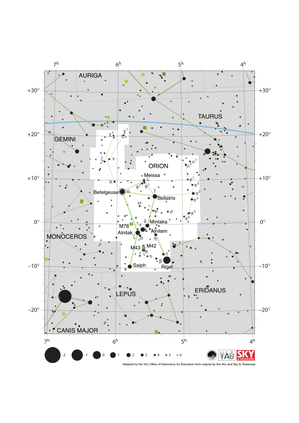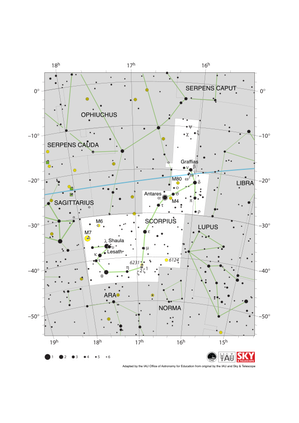Glossarbegriffe: Deklination
Description: In äquatorialen Koordinatensystemen ist die Deklination eine der beiden Koordinaten, um anzugeben, wo sich ein Objekt am Himmel befindet. Die Deklination ist der Winkelabstand des Objekts zum Himmelsäquator und wird üblicherweise in Grad gemessen: Objekte auf der Nordhalbkugel haben einen positiven Zahlenwert, Objekte auf der Südhalbkugel einen negativen Zahlenwert. Die Deklination entspricht somit der geografischen Breite auf der Erdoberfläche. Der Himmelsäquator entspricht in etwa der Projektion des Erdäquators auf die Himmelskugel. Moderne Koordinatensysteme wie das Internationale Himmelsreferenzsystem (englisch International Celestial Reference System, kurz ICRS) definieren den Himmelsäquator stattdessen ohne Bezug auf die Erde. Stattdessen verwenden sie sehr weit entfernte astronomische Objekte als Referenz.
Zugehörige Glossarbegriffe:
See this term in other languages
Term and definition status: The original definition of this term in English have been approved by a research astronomer and a teacher The translation of this term and its definition is still awaiting approval
The OAE Multilingual Glossary is a project of the IAU Office of Astronomy for Education (OAE) in collaboration with the IAU Office of Astronomy Outreach (OAO). The terms and definitions were chosen, written and reviewed by a collective effort from the OAE, the OAE Centers and Nodes, the OAE National Astronomy Education Coordinators (NAECs) and other volunteers. You can find a full list of credits here. All glossary terms and their definitions are released under a Creative Commons CC BY-4.0 license and should be credited to "IAU OAE".
If you notice a factual or translation error in this glossary term or definition then please get in touch.
Related Diagrams
Andromeda Constellation Map
Bildnachweis: Adapted by the IAU Office of Astronomy for Education from the original by IAU/Sky & Telescope
License: CC-BY-4.0 Creative Commons Namensnennung 4.0 International (CC BY 4.0) icons
Crux Constellation Map
Bildnachweis: Adapted by the IAU Office of Astronomy for Education from the original by IAU/Sky & Telescope.
License: CC-BY-4.0 Creative Commons Namensnennung 4.0 International (CC BY 4.0) icons
Orion Constellation Map
Bildnachweis: Adapted by the IAU Office of Astronomy for Education from the original by IAU/Sky & Telescope
License: CC-BY-4.0 Creative Commons Namensnennung 4.0 International (CC BY 4.0) icons
Libra Constellation Map
Bildnachweis: Adapted by the IAU Office of Astronomy for Education from the original by IAU/Sky & Telescope
License: CC-BY-4.0 Creative Commons Namensnennung 4.0 International (CC BY 4.0) icons
Scorpius Constellation Map
Bildnachweis: Adapted by the IAU Office of Astronomy for Education from the original by IAU/Sky & Telescope
License: CC-BY-4.0 Creative Commons Namensnennung 4.0 International (CC BY 4.0) icons













